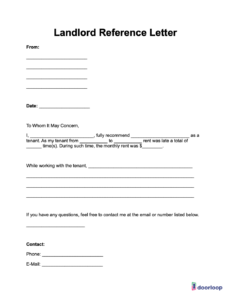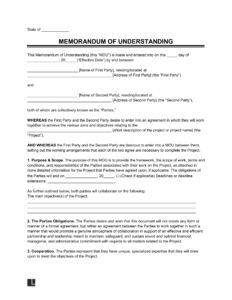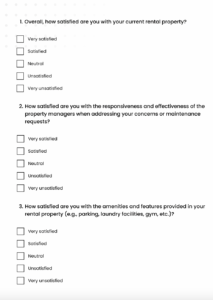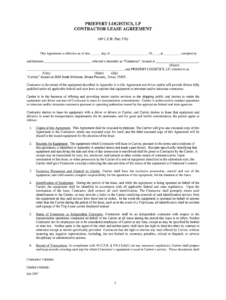Utilizing such a form offers several advantages. It ensures consistency in the information gathered, facilitating objective comparisons between applicants. It also streamlines the screening process, saving time and effort for both the requesting party and the reference provider. Furthermore, a well-designed form can protect against discrimination claims by ensuring all applicants are evaluated based on the same criteria.
This structured approach to tenant screening contributes significantly to informed decision-making in the rental process. The following sections will explore the key components of an effective form, best practices for its utilization, and legal considerations to keep in mind.
Key Components of a Tenant Reference Request
Effective reference requests contain specific elements designed to elicit comprehensive and relevant information about prospective tenants. These components ensure a thorough understanding of an applicant’s rental history.
1. Identifying Information: Clear identification of the applicant and the property for which they’ve applied is essential. This includes the applicant’s full name, current address, and the address of the subject property.
2. Dates of Tenancy: Precise dates of the applicant’s previous tenancy are necessary to verify the duration and recency of their rental history.
3. Payment History: Inquiries regarding the timeliness and consistency of rent payments are crucial for assessing financial responsibility. Specific questions about late payments, missed payments, or any outstanding balances should be included.
4. Property Condition: Questions about the applicant’s maintenance of the property during their tenancy, including any damages beyond normal wear and tear, are vital.
5. Lease Compliance: Inquiries regarding the applicant’s adherence to the terms of their previous lease, such as pet policies, guest restrictions, or quiet hours, provide valuable insights into their behavior and reliability.
6. Communication and Cooperation: Assessing the applicant’s communication style and their willingness to cooperate with management is important for predicting future interactions.
7. Overall Recommendation: A direct question regarding the previous landlord’s overall recommendation of the applicant provides a concise summary of their suitability.
8. Contact Information: Providing space for the previous landlord’s contact information allows for follow-up questions or clarification if needed.
Gathering these specific pieces of information allows for a comprehensive assessment of an applicant’s suitability, enabling informed leasing decisions and contributing to a positive landlord-tenant relationship.
How to Create a Tenant Reference Request Template
Developing a structured template ensures consistency and efficiency in the tenant screening process. The following steps outline the creation of a comprehensive and effective form.
1. Header: Begin with a clear header identifying the document as a “Tenant Reference Request.” Include space for the date and the name of the requesting party.
2. Applicant Information: Clearly identify the applicant by providing fields for their full name, current address, phone number, and email address. Also, include the address of the property for which they’ve applied.
3. Previous Landlord Information: Provide space for the previous landlord’s name, company (if applicable), address, phone number, and email address.
4. Tenancy Dates: Request the specific dates of the applicant’s previous tenancy.
5. Payment History: Include questions regarding the applicant’s payment history, such as: “Were rent payments consistently made on time?” and “Were there any instances of late or missed payments?” Provide space for details and explanations.
6. Property Condition: Inquire about the condition of the property during the applicant’s tenancy. Ask: “Was the property maintained in good condition?” and “Were there any significant damages beyond normal wear and tear?”
7. Lease Compliance: Ask about the applicant’s adherence to lease terms, such as: “Did the applicant comply with the terms of the lease agreement?” and “Were there any violations of the lease?”
8. Communication and Cooperation: Include questions regarding the applicant’s communication and cooperation: “How would you describe the applicant’s communication style?” and “Were there any issues with cooperation or communication with management?”
9. Overall Recommendation: Ask for an overall recommendation: “Would you recommend this applicant as a tenant?” and provide space for comments and explanations.
10. Signature and Date: Include a space for the previous landlord’s signature and date to validate the information provided.
A well-designed form facilitates a comprehensive understanding of an applicant’s rental history, enabling more informed decisions and contributing to successful tenancies.
Careful tenant screening is crucial for protecting property investments and fostering positive landlord-tenant relationships. A well-crafted, standardized form provides a framework for gathering consistent and objective information about prospective renters, facilitating informed decisions and mitigating potential risks. Understanding the key components of such a form, along with best practices for its creation and utilization, empowers landlords and property managers to make sound judgments, leading to more successful and harmonious tenancies.
Effective use of these resources promotes professionalism and stability within the rental market, contributing to a more secure and predictable experience for all parties involved. This proactive approach to tenant selection fosters a foundation for long-term success in property management.



